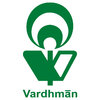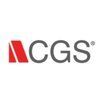Filter interviews by
Bindal Silk Mills Safety Officer Interview Questions, Process, and Tips
Bindal Silk Mills Safety Officer Interview Experiences
1 interview found
I applied via Recruitment Consulltant and was interviewed in Aug 2022. There were 3 interview rounds.

(3 Questions)
- Q1. Give your self introduction
- Q2. What is your current salary
- Q3. Why do you want to change
(7 Questions)
- Q1. What is risk assesment
- Ans.
Risk assessment is the process of identifying, analyzing, and evaluating potential risks to determine the likelihood and impact of harm.
Identify potential hazards
Assess the likelihood and severity of harm
Evaluate the risk and determine appropriate control measures
Review and update the assessment regularly
Examples: workplace safety, environmental risks, financial risks
- Q2. What is Job safety analysis
- Ans.
Job safety analysis is a process of identifying potential hazards and risks associated with a job or task.
It involves breaking down a job into individual steps
Identifying potential hazards and risks associated with each step
Developing controls and procedures to eliminate or reduce the risks
Ensuring that the controls and procedures are communicated to all workers involved in the job
Regularly reviewing and updating the j
- Q3. How you can investigate accident
- Ans.
Accident investigation involves gathering information, analyzing evidence, and identifying root causes.
Interview witnesses and gather statements
Examine the accident scene and collect physical evidence
Review safety procedures and training records
Identify contributing factors and root causes
Develop recommendations to prevent future accidents
- Q4. What are the legal compliance of safety
- Ans.
Legal compliance of safety refers to the laws and regulations that organizations must follow to ensure workplace safety.
Organizations must comply with federal, state, and local safety regulations
Safety standards must be established and communicated to employees
Regular safety inspections and audits must be conducted
Accidents and incidents must be reported and investigated
Training and education programs must be provided ...
- Q5. What are the is code of fire extinguisher
- Ans.
IS codes for fire extinguishers are standards set by the Bureau of Indian Standards (BIS) for ensuring quality and safety.
IS 15683:2006 - Specification for ABC powder type fire extinguishers
IS 13849:1993 - Specification for water type fire extinguishers
IS 940:2002 - Specification for carbon dioxide type fire extinguishers
IS 10204:1983 - Specification for foam type fire extinguishers
IS 13385:1992 - Specification for dry
- Q6. In which clause of factory act OHS policy falls
- Ans.
OHS policy falls under Section 41-F of the Factories Act.
OHS policy is covered under the Factories Act, which is a comprehensive legislation governing the safety, health, and welfare of workers in factories.
Section 41-F of the Factories Act deals with the provisions related to the health and safety policy of the factory.
The OHS policy should be in writing and should be communicated to all workers in the factory.
The pol...
- Q7. How many types of fire extinguisher
- Ans.
There are 5 types of fire extinguishers: water, foam, powder, CO2, and wet chemical.
Water extinguishers are used for Class A fires involving paper, wood, and textiles.
Foam extinguishers are used for Class A and B fires involving flammable liquids.
Powder extinguishers are used for Class A, B, and C fires involving flammable gases.
CO2 extinguishers are used for Class B and electrical fires.
Wet chemical extinguishers are ...
Interview Preparation Tips
- Risk Assessment
- Legal Compliance
Top trending discussions






Bindal Silk Mills Interview FAQs
Tell us how to improve this page.
Interview Questions for Popular Designations
- Safety Supervisor Interview Questions
- Fire & Safety Officer Interview Questions
- Senior Safety Officer Interview Questions
- Safety Engineer Interview Questions
- Drug Safety Associate Interview Questions
- Safety Manager Interview Questions
- Safety Supervisor, Safety Officer Interview Questions
- Safety Executive Interview Questions
- Show more
Interview Questions from Similar Companies
|
Accounts Manager
4
salaries
| ₹6.2 L/yr - ₹7.5 L/yr |
|
Instrument Engineer
4
salaries
| ₹3 L/yr - ₹6 L/yr |
|
Electrical Engineer
3
salaries
| ₹3 L/yr - ₹3 L/yr |

Raymond Lifestyle Limited

Vardhman Fabrics

Welspun

Arvind Group
- Home >
- Interviews >
- Bindal Silk Mills Interview Questions >
- Bindal Silk Mills Safety Officer Interview Questions










